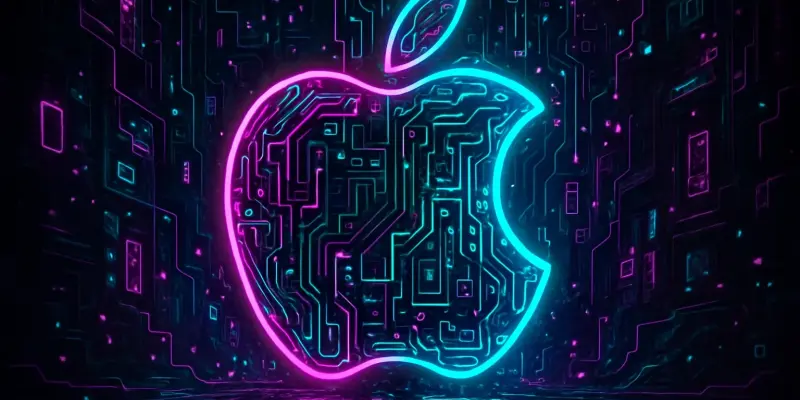Apple’s annual World Wide Developers Conference (WWDC) has always been the epicenter of groundbreaking technological advancements, drawing global attention. This year, the tech giant is experimenting with a calculated departure from the norm through its ambitious strategy: revising its operating system naming conventions to correlate with the years of use. The leap to iOS 26, alongside similar changes in iPadOS, macOS, tvOS, visionOS, watchOS, and homeOS, exemplifies Apple’s intention to reshuffle the media narrative, shifting focus from ongoing regulatory, trade, and competitive challenges.
Event Overview: Apple’s Strategic Shift
WWDC 2025 introduced Apple’s significant shift in focus, targeting its operating systems to steer media narratives proactively. By aligning version numbers with the calendar year, Apple intends to intrigue both industry insiders and consumers—aiming to establish a media-controlled narrative amidst crackdowns and competitive pressures from AI innovations. This strategy symbolizes a strategic redirection to prioritize user interface transformation and aesthetic uniformity across Apple’s ecosystem.
Apple’s decision to revamp its naming protocol arises from a challenging backdrop where trade tariffs loom, regulations tighten, and AI competition intensifies. At the heart of this shift is “Solarium,” a new user interface paradigm that enhances Apple’s devices with design elements indicative of visionOS 1.0’s charm, keen on fostering a seamless cross-device experience. This strategic maneuver suggests Apple’s endeavor to captivate media focus away from contentious subject matter while spotlighting its competencies in UI/UX evolution.
Key Highlights from WWDC Announcements
WWDC witnessed a plethora of engrossing dialogues and pivotal unveilings, delineating Apple’s newest operating system strategy and wider ambitions. Unlike previous gatherings, the conference placed a stronger emphasis on a harmonized visual theme across devices, intertwining the experience with the latest Solarium update. This approach accentuates Apple’s attempt to infuse a reimagined interface with enhancements that boast spatial depth and translucent effects, marking a defining moment of the proceedings.
Influential Talks and Expert Insights
Keynote speeches and expert-led sessions at WWDC underscored Apple’s forward-thinking philosophy and the flagship Solarium interface update. Significant announcements pointed to a cohesive interface strategy that aligns with futuristic visions—exemplified by harmonious design across the device suite. Expert insights spotlighted Solarium’s potential influence as a catalyst for a seamless ecosystem transition, grounding Apple’s overarching narrative for years to come.
Panel Discussions and Expert Opinions
Panel discussions fostered rich debates among industry leaders regarding Apple’s strategic realignment with their naming convention and OS updates. Experts shared varying perspectives on Apple’s deliberate shift, grappling with the wider implications it bears—especially concerning the company’s strategic communication amid regulatory and competitive pressures. Consensus emerged around the potential of this tactic to effectively manage media dynamics and maintain brand prestige.
Engaging Workshops and Demonstrations
Beyond formal presentations, interactive workshops and demonstrations captivated and engaged attendees, offering hands-on experiences with Apple’s innovations. Participants were introduced to the intricacies of new technological offerings and invigorated by live demonstrations that highlighted the facets of Apple’s UI enhancements. These sessions proved instrumental in reinforcing the strategic message, resonating with Apple’s drive to establish a pervasive narrative.
Innovations and Technology Unveilings
The event showcased several product demonstrations and technological unveilings that garnered attention for their ingenuity and alignment with Apple’s broader strategy shift. Innovative features revealed in new operating systems underscored the relevance of Apple’s narrative, notably through emergent technologies that promise to shape future consumer interactions. By positioning innovations at the forefront, Apple aims to steer discussions toward its transformative efforts and market adaptability.
Long-term Implications and Industry Impact
The announcement of a new naming convention and unified interface through Solarium carries significant long-term ramifications, not only for Apple but across the tech industry. The ramifications echo Apple’s influence on market trends, sending ripples through the entire industry in the naming schema and media engagement strategies. Insights from WWDC point to potential shifts in branding approaches and user interface priorities as Apple and its competitors wrestle with the varied challenges of a rapidly evolving landscape.
While Apple’s narrative control ventures may sway media narratives temporarily, the onus remains to demonstrate tangible value through novel services and digital health tools over time. Should interactive innovations materialize at scale, Apple’s attention-diversion method may well secure its media discourse aspirations, reasserting its market foothold through strategic prowess rather than temporary distractions. In an era where names hold weight, changes like these can reverberate beyond, molding the industry’s collective approach to communications.

